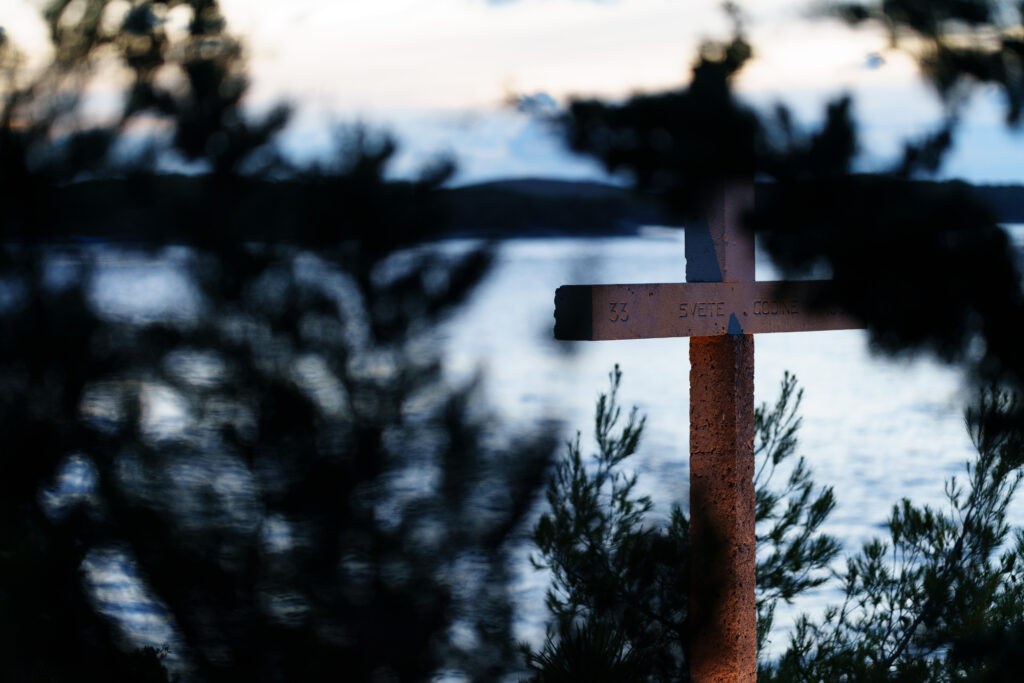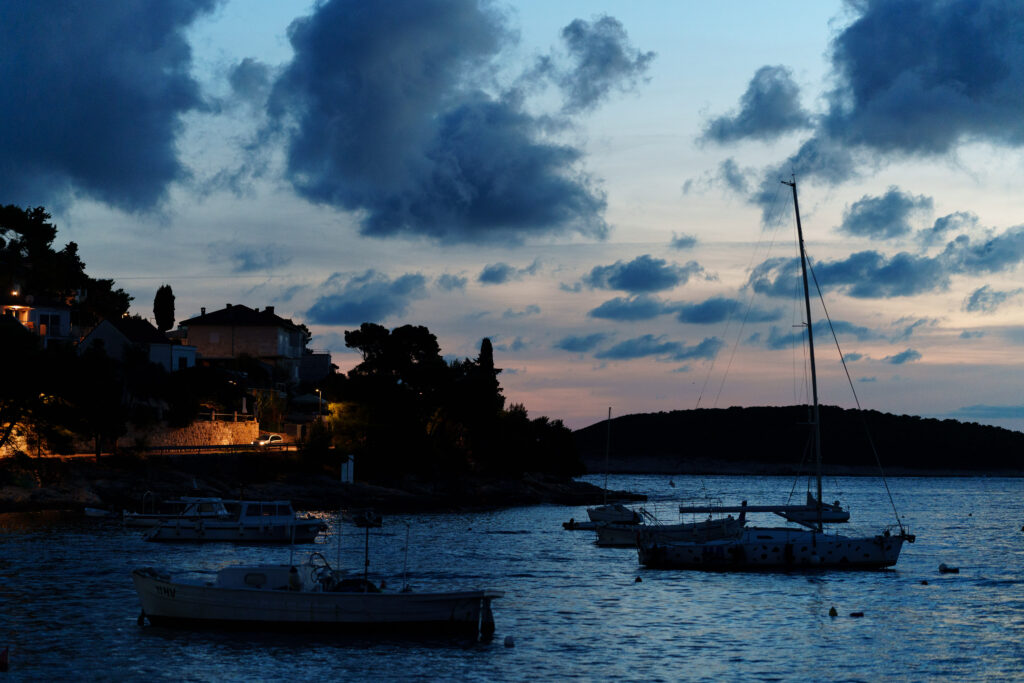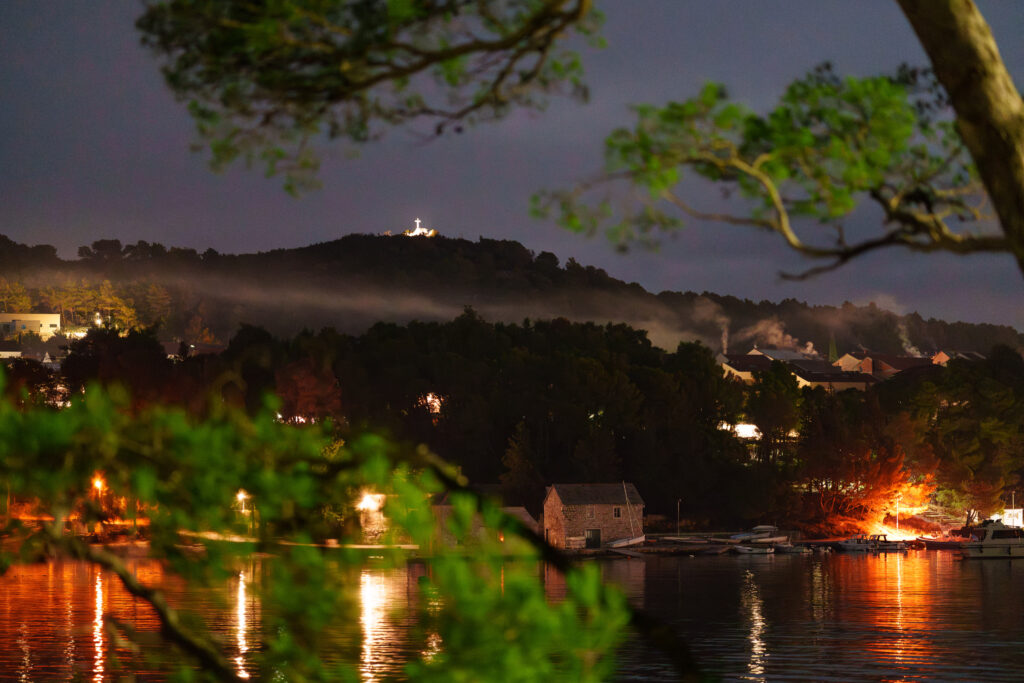I could go on about various things that get souls destroyed in this world; for instance, atheism/materialism is spiritually fatal, and this world is the only place that creates conditions that make it a possibility. The souls, of course, carry a deep conviction of God’s existence within themselves from the real world, so they for the most part instinctively embrace some form of religion, because it “makes sense”, but some who hated God and always wished he didn’t exist or died, see this place as a haven full of possibility. Of course, for a soul atheism is suicidal; it negates the conditions that make its existence possible, because a soul lives only because it maintains a transcendental connection to the Absolute, through all its kalapas. Negating God is up there with all other terrible sins a soul can commit if it wants to destroy itself, and this world facilitates that by design.
So, one can feel fully justified in asking why creation of this world was allowed in the first place, and who is to blame? There must be some sort of responsibility for this, because it’s like digging up a deep hole in the ground, covering it with a carpet, putting advertisement and sign posts pointing to that direction promising great stuff, and when someone falls in, you say it’s their fault; you didn’t drop them in, you just dug up a hole, posted false advertisement to trick the gullible, and covered the hole so that its nature wouldn’t be obvious. When we put it like that, this is not a world, it’s a crime scene.
However, things are not that simple. Responsibility for this place is layered. The first, fundamental responsibility lies with God who created the necessary conditions that made this possible, by creating the Jewel, and allowing someone lesser than himself to allow or deny access. We can further reduce this part to the desire to allow lesser beings to have access to God’s creative power, because that was the motivation – God didn’t need the Jewel to create worlds, and if he himself guarded access, that would be the same as if saying that only he could use it. The point of lesser beings using creative power is for them to use it for purposes God wouldn’t think of, or allow. This is the reason why someone less than God had to be given the position of a Sentinel.
The second level of responsibility lies with the Sentinel, who did two things wrong: he allowed Sanat Kumar to create this hellhole, and he dismissed the warning.
The third level of responsibility lies with Sanat Kumar, who designed this world to be what it is, with full knowledge of what’s most likely to happen.
The fourth level of responsibility lies with the souls who discovered that this world allows for all kinds of things they always wanted to do, but had no option to do them – enslave, imprison, rape, maim and murder other beings, for instance. A large part of why this place is a hell is because of who lives here and what they like doing. Sure, a big part of suffering is caused by the world itself, but incarnate souls are certainly doing their part in making Satan’s dream come true.
So, without God taking pity on lesser beings and allowing them to use tools that are way above what they should normally have access to at their point of spiritual evolution, none of this would have happened. Without Sentinel being an arrogant fool, Sanat Kumar could do nothing. Without Sanat Kumar, who used the Jewel in order to create a godless dungeon that encourages evil and discourages devotion to God, the Jewel would probably be used for some benign purpose – and likely was, but we don’t know about it because it wasn’t a problem. And of course, without evil souls who used this place for all kinds of terrible things, it never would have become the hellhole it is now.
But let me be the Devil’s advocate here for a moment. I have a small axe, or you can call it a hatchet, that I use for splitting firewood when I’m making barbecue. It’s left here in the open on top of the box with wood. It’s not guarded or supervised, and yet nobody used it to split someone’s head open. There are also kitchen knives in the drawer, they are all unsupervised, and nobody used any of those to slaughter someone. There are cans of butane gas for the portable stove that I use for making breakfast when the electricity runs out, which sometimes happens here. Nobody had the brilliant idea of rigging the cans together and putting them on the induction stove to make a bomb. You can see what I’m getting at. If you have the mind of a criminal, you could use all kinds of harmless or otherwise useful objects for evil purposes. The fact that something exists that could potentially be abused doesn’t mean that the one creating the thing in question is responsible for a crime. People who make hatchets intended for people to use them for splitting wood or rough carpentry. People making kitchen knives intended for people to use them for cutting meat and vegetables. People making cars intended for people to use them for going places, not running into groups of people with intent of mass murder. It is implied that the responsibility for use of something lies on the user and not the manufacturer, except if the item itself is designed in ways that encourage evil use. For instance, if you design a truck with enforced structure and spikes and blades on the front, with intent of making it easier to injure people, that would count as designing something especially intended for evil uses. Manufacturing explosive devices that look like candy so that children would be encouraged to pick them up and be killed or maimed is also one such use, where the manufacturer is complicit in a crime. I don’t think the Jewel qualifies. He’s more like a computer that you can use to do whatever. If “whatever” means playing Super Mario, reading books, having some privacy or creating a VR of a magical forest with all kinds of beautiful things, nobody has a problem. There are, however, all kinds of uses that are a problem, but they are not a result of some malevolent use designed into the computer, but of malevolent aspects of human nature that use computers to create or watch child porn, trucks for vehicular homicide, and hatchets for splitting people’s heads open.
You can say that something as powerful as the Jewel shouldn’t have been left unsupervised. It wasn’t. However, the supervisor failed in his task. You can say the supervisor should have been someone better. Maybe, if there was a valid reason to suspect that Sentinel wouldn’t do a good job prior to the fact, he wouldn’t be appointed. It’s easy to be smart in hindsight. I was actually there and I warned the Sentinel not to grant access to Sanat Kumar, and he waved me off and even lectured me on developing more faith in God. If anyone is qualified to bitch about it, it’s me, and I’m not even sure what could have been done to prevent this mess other than not creating the Jewel in the first place, because it’s obvious now that giving non-Divine beings Divine power ultimately results in disaster. There’s a reason why great power comes with great wisdom and great holiness. Separating power from wisdom and holiness means to create conditions for great abuse of said power.
However, let’s make one thing clear. Sanat Kumar was a criminal and Sentinel was an idiot, but if it weren’t for the likes of you, Sanat Kumar would have created this world and listened to the crickets, because nobody would have gone in. All the arrogant souls wanted to test themselves, all the stupid ones rushed in and got wrecked, and all who wanted a place where they could live without God and be his enemies rushed in gladly. All the criminals who wanted to feel what it’s like to kill someone went in, thinking they finally found the true Heaven. The fact that all those souls got fucked here is not a tragedy. I guess one could say that God allowed creation of this place exactly because of his foresight, knowing that this will serve to purge Heaven of all kinds of bastards and scum, who will show their true colours here, be destroyed and the spiritual energy once contained in them will be freed and joined with better souls, all ultimately to the greater glory of God.
So, eventually it all depends on how you look at it. If you’re a bastard soul who went here because you thought you could do evil with impunity, or get an ego trip out of defeating Satan, you got fucked and now you’re whining and looking for someone to blame. Sorry, but fuck you. If you’re someone like myself who has to clean it up and it hurts like bloody hell, you’re complaining but you’re also growing bigger and more powerful so also, no tears should be shed over my fate. Sanat Kumar was already found guilty and killed for his crimes, so you can blame him all you want but he’s already been dealt with. You can blame the Sentinel for being an idiot, but he too is already dead so you can piss on his grave for all it will do. You can blame me for not intimidating the Sentinel and only using arguments, but he was put there to do his job and intimidating him into submission would defy the purpose of his post. You can blame God for creating the Jewel in the first place, and that’s a fair point, but please remind me why that even became a problem? Oh right, because there are asshole souls who wanted to use hatchets for killing people instead of splitting firewood, and please remind me why it’s actually bad that they all got destroyed?
As I said, it’s a complicated mess, and I’m not sure blaming anyone is the right sentiment. There are lessons to be learned, and there’s a mess to clean up, and there are hopefully ways to turn this into something good.





